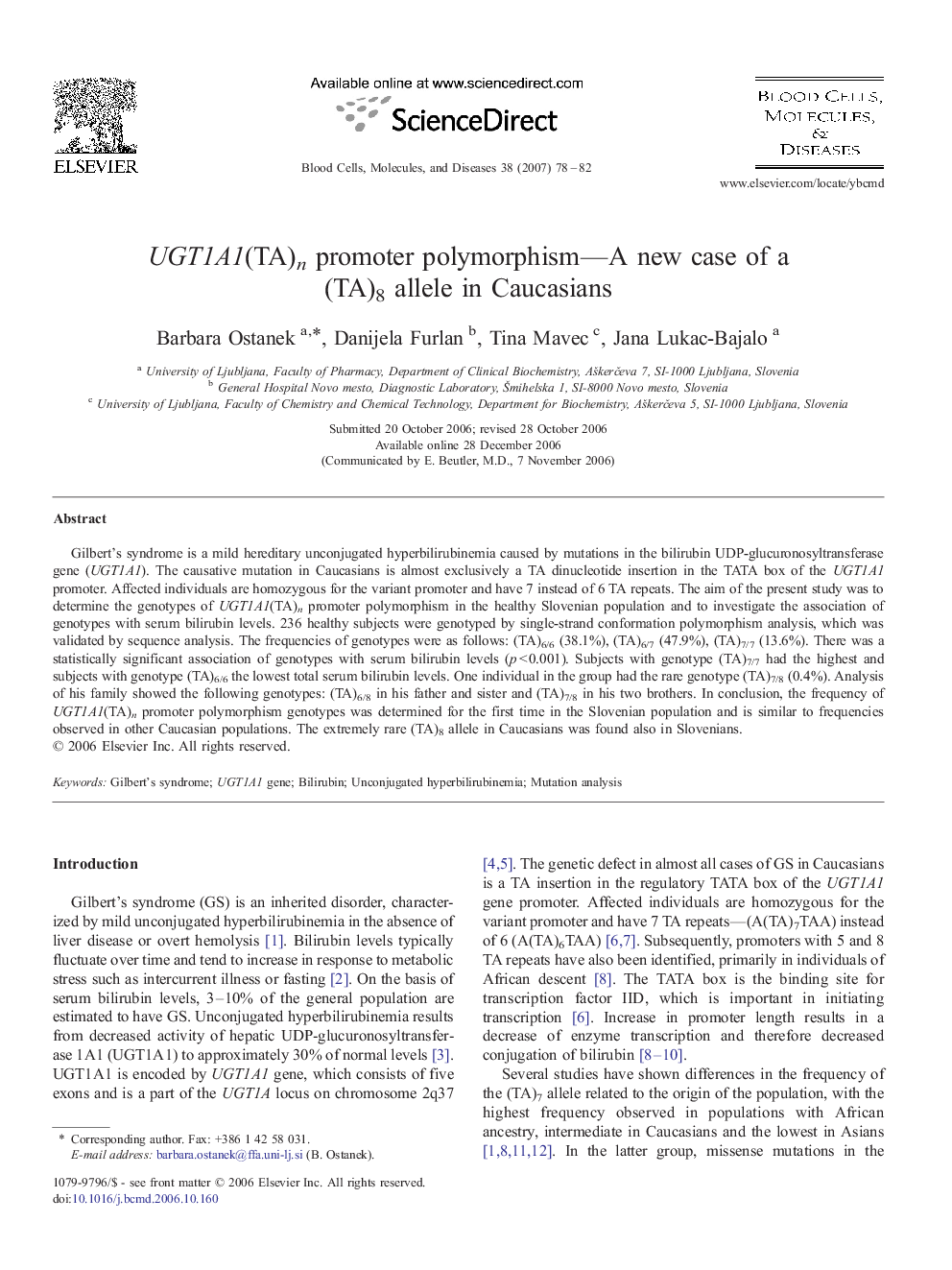| Article ID | Journal | Published Year | Pages | File Type |
|---|---|---|---|---|
| 2828138 | Blood Cells, Molecules, and Diseases | 2007 | 5 Pages |
Gilbert's syndrome is a mild hereditary unconjugated hyperbilirubinemia caused by mutations in the bilirubin UDP-glucuronosyltransferase gene (UGT1A1). The causative mutation in Caucasians is almost exclusively a TA dinucleotide insertion in the TATA box of the UGT1A1 promoter. Affected individuals are homozygous for the variant promoter and have 7 instead of 6 TA repeats. The aim of the present study was to determine the genotypes of UGT1A1(TA)n promoter polymorphism in the healthy Slovenian population and to investigate the association of genotypes with serum bilirubin levels. 236 healthy subjects were genotyped by single-strand conformation polymorphism analysis, which was validated by sequence analysis. The frequencies of genotypes were as follows: (TA)6/6 (38.1%), (TA)6/7 (47.9%), (TA)7/7 (13.6%). There was a statistically significant association of genotypes with serum bilirubin levels (p < 0.001). Subjects with genotype (TA)7/7 had the highest and subjects with genotype (TA)6/6 the lowest total serum bilirubin levels. One individual in the group had the rare genotype (TA)7/8 (0.4%). Analysis of his family showed the following genotypes: (TA)6/8 in his father and sister and (TA)7/8 in his two brothers. In conclusion, the frequency of UGT1A1(TA)n promoter polymorphism genotypes was determined for the first time in the Slovenian population and is similar to frequencies observed in other Caucasian populations. The extremely rare (TA)8 allele in Caucasians was found also in Slovenians.
